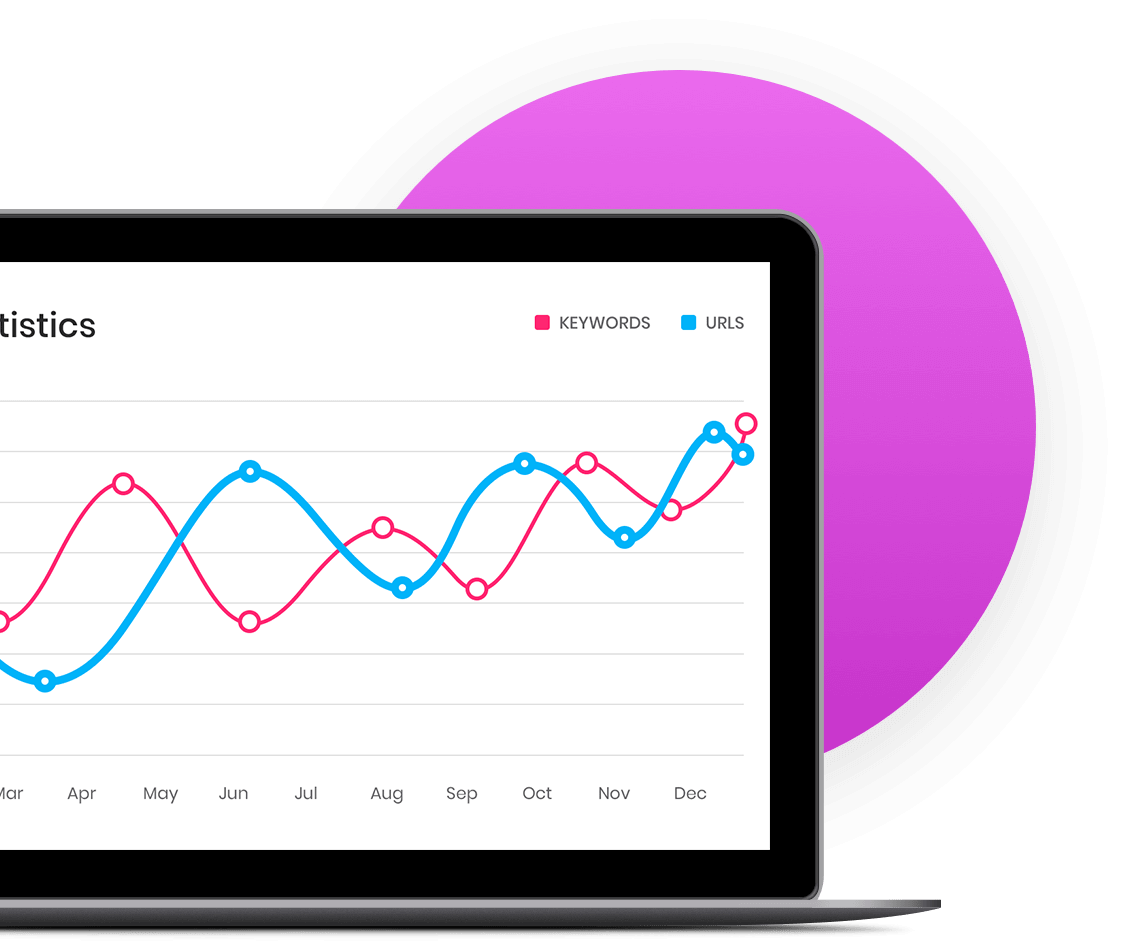E-commerce has changed a lot since it first started. It has grown from simple online stores to complex marketplaces driven by technology. This evolution continues to reshape how businesses operate and how consumers shop, creating unprecedented opportunities in the digital retail space.
The next wave of innovation will redefine online shopping by 2025. Understanding these emerging trends is crucial for businesses aiming to stay competitive and meet evolving consumer expectations. From AI-powered personalisation to sustainable practices, these developments will shape the future of digital commerce.
Market projections paint a compelling picture of the sector’s significance:
- Global e-commerce sales are expected to reach £7.5 trillion by 2025
- Mobile commerce will account for 72.9% of all online purchases
- Cross-border e-commerce growth rate predicted at 27% year-over-year
- Social commerce market set to exceed £1.2 trillion in value
These statistics highlight the vital importance of adapting to new e-commerce trends and technologies. Businesses that embrace these changes will be better positioned to capture market share and deliver exceptional shopping experiences in 2025 and beyond.
1. AI-Driven Personalisation in E-Commerce
Artificial Intelligence is transforming online shopping with advanced personalisation tools that analyse customer behaviour, purchase history and browsing habits in real-time. These AI systems generate customised product recommendations and content that speaks to each shopper.
How Generative AI Enhances Personalisation
Generative AI takes personalisation to the next level by:
- Creating dynamic product descriptions
- Designing custom landing pages
- Generating personalised email content
- Crafting individual pricing strategies
The Role of AI in Subscription Services
AI-powered subscription services automatically adapt to customer preferences by adjusting delivery schedules and product selections based on usage patterns and feedback.
Improvements in Customer Service through AI
Customer service sees significant improvement with:
- 24/7 AI chatbots handling routine queries
- Smart virtual assistants offering product guidance
- Predictive support addressing issues before they occur
- Automated returns processing with personalised solutions
These implementations of AI have shown impressive results, with businesses reporting up to 30% increase in conversion rates and 20% higher customer satisfaction scores through personalised experiences.
2. Data Security and Privacy as a Cornerstone
In the ever-changing world of online shopping, consumer trust depends on strong data protection measures. Research shows that 87% of shoppers prioritise data security when selecting online retailers.
Safeguarding Financial Information with Secure Payment Gateways
Secure payment gateways that use advanced encryption methods protect sensitive financial information:
- SSL/TLS Encryption: This method scrambles data in real-time during transactions to ensure its security.
- Tokenisation: Instead of storing card details, this technique replaces them with unique identifiers, adding an extra layer of protection.
- Two-Factor Authentication: By requiring an additional verification step, such as a code sent to the user’s mobile device, this method enhances security further.
Adapting to Changing Privacy Regulations
The introduction of regulations like GDPR and CCPA, along with new privacy laws being developed, is influencing how businesses manage customer data. E-commerce platforms must:
- Clearly communicate their data collection practices
- Give users control over their personal information
- Establish strict access controls for data
- Conduct regular security audits and compliance assessments
Making Data Protection a Selling Point
Top retailers are now prominently displaying their security credentials, turning data protection from a behind-the-scenes operation into a major selling point.
3. The Rise of Social Commerce
Social media platforms have transformed into powerful retail destinations, creating seamless shopping experiences directly within users’ favourite apps. Instagram Shop, TikTok Shopping and Pinterest’s buyable pins allow users to discover and purchase products without leaving their preferred platforms.
User-generated content drives authentic engagement and builds trust through:
- Real customer reviews and photos
- Product demonstrations
- Style inspiration posts
- Community recommendations
The impact of influencer partnerships continues to grow, with 89% of marketers identifying influencer marketing as an effective strategy. Micro-influencers, in particular, generate 60% higher engagement rates compared to macro-influencers due to their targeted, niche audiences.
Social commerce sales are projected to reach £1.2 trillion by 2025, with platforms investing heavily in:
- Live shopping features
- AR product try-ons
- One-click checkout
- In-app loyalty programmes
This shift has prompted traditional retailers to adapt their strategies, focusing on omnichannel presence and social-first marketing approaches to remain competitive in the evolving retail landscape. To navigate this new terrain successfully, brands can benefit from the expertise of a marketing agency that offers a range of services including SEO, PPC, web design and email campaigns.
Such an agency can help optimize online visibility through SEO, drive targeted traffic with PPC campaigns and enhance customer engagement via email marketing.
4. Voice Commerce and Conversational Shopping
Voice-enabled shopping transforms daily routines into seamless purchasing experiences. Smart assistants like Alexa and Google Home now process complex shopping commands, from creating grocery lists to completing transactions through natural dialogue.
The integration of advanced natural language processing enables these systems to:
- Understand context and user preferences
- Remember previous purchases
- Suggest complementary products
- Handle multi-step transactions
Voice commerce adoption faces specific challenges:
- Security concerns around voice authentication
- Accuracy in product selection without visual confirmation
- Limited product comparison capabilities
Despite these hurdles, market projections indicate voice shopping will reach £30 billion in the UK by 2025. Retailers adapt by developing voice-specific interfaces and optimising product descriptions for audio search, creating a new standard in convenient shopping experiences.
The technology extends beyond home devices to messaging platforms, where chatbots handle customer queries and facilitate purchases through conversational AI, marking a significant shift in how consumers interact with online stores.
5. Augmented Reality (AR) Enhancing Online Shopping Experiences
AR technology is changing the game for online shopping by providing immersive digital experiences that replicate physical retail interactions. Leading brands like IKEA and Sephora are already using virtual try-on solutions, enabling customers to see how products would look in their space or on themselves before making a purchase.
Key applications include:
- Virtual Room Planning: Customers can use their smartphone cameras to place furniture items in their rooms
- Beauty Product Testing: Virtual makeup application that shows real-time results
- Fashion Try-Ons: Digital overlays of clothing items to help shoppers assess fit and style
AR helps bridge the confidence gap in online purchasing by offering realistic visualisation of products. Research shows that product pages with AR see conversion rates up to 94% higher than standard listings.
To further boost these conversion rates, retailers can consider implementing a CRM setup service which enhances customer conversion and satisfaction by providing essential features tailored to business needs.
The impact of this technology goes beyond just sales numbers:
- Reduced return rates by up to 35%
- 40% increase in average time spent on site
- 65% higher levels of customer engagement
Retailers who invest in AR capabilities are reporting stronger brand positioning and a competitive edge in the digital marketplace.
6. Sustainability as a Consumer Priority
Environmental awareness shapes consumer behaviour in 2025’s e-commerce landscape. Research indicates 73% of shoppers prioritise brands with strong sustainability credentials, driving significant changes across the industry.
Leading retailers now implement comprehensive green initiatives:
- Eco-Friendly Packaging Solutions
- Biodegradable materials
- Plastic-free alternatives
- Right-sized packaging to reduce waste
- Carbon-Neutral Operations
- Electric delivery vehicles
- Solar-powered warehouses
- Carbon offset programmes
Brands embrace radical transparency in their sustainability efforts. Digital product passports enable customers to track items from source to delivery, verifying ethical manufacturing practices and environmental impact. Companies like Patagonia and Allbirds set new standards by displaying real-time carbon footprint data for each purchase.
The shift towards sustainable e-commerce creates opportunities for innovative solutions. Green marketplaces exclusively featuring eco-certified products gain popularity, whilst blockchain technology validates environmental claims and ensures supply chain accountability.
7. Supply Chain Optimisation through Technology
Supply chain automation is transforming warehouse operations with the help of advanced robotics systems. Automated Guided Vehicles (AGVs) move around the warehouse on their own, precisely handling inventory movement, while collaborative robots work together with human staff to improve picking and packing efficiency.
AI-Powered Demand Forecasting
AI-powered demand forecasting analyses past data, market trends and real-time consumer behaviour to predict stock needs. This intelligent system helps retailers:
- Reduce excess inventory costs
- Prevent stockouts during busy periods
- Optimise storage space usage
- Maintain ideal stock levels across locations
Drone Delivery Services
Drone delivery services are changing last-mile logistics by providing fast delivery options for urban areas. Companies like Amazon and DHL are using autonomous drones for quick, contactless deliveries, which helps reduce carbon emissions and delivery times.
Digital Twin Technology
Digital twin technology creates virtual copies of physical supply chains, allowing for:
- Real-time monitoring of operations
- Predictive maintenance scheduling
- Risk assessment and mitigation
- Performance optimisation across networks
These technological advancements are creating strong and efficient supply chains that can adapt to market changes and consumer demands.
8. Flexible Subscription Commerce Models 2025
Subscription commerce is undergoing a radical transformation, with AI-powered platforms enabling real-time personalisation at scale. Retailers now offer dynamic subscription models that adapt to individual customer preferences and usage patterns.
Key Features of Modern Subscription Services:
- Intelligent product recommendations based on consumption habits
- Flexible delivery schedules that adjust to customer lifestyles
- Seamless product swapping capabilities
- Integration with smart home devices for automated reordering
These adaptable models create predictable revenue streams for businesses whilst giving customers unprecedented control. Leading brands like Stitch Fix and HelloFresh have pioneered AI-driven personalisation, allowing subscribers to modify their boxes based on seasonal preferences or dietary requirements.
Furthermore, the rise of flexible subscription commerce models is reshaping consumer expectations and business strategies alike. The market for personalised subscription services is projected to reach £200 billion by 2025, with 60% of consumers indicating a preference for flexible subscription options over traditional fixed models.
9. Composable Commerce Enabling Agility and Scalability
The rise of composable commerce architecture is transforming the way businesses create and grow their online platforms. This flexible method allows companies to choose and connect specific commerce parts according to their individual requirements.
Key advantages of modular platform design:
- Rapid feature deployment without system-wide changes
- Seamless third-party integrations
- Cost-effective scaling capabilities
- Enhanced platform resilience
The flexibility of composable architecture enables businesses to adapt swiftly to market changes and consumer demands. Companies can target specific market segments through customised storefronts while maintaining a unified backend infrastructure.
Global scaling becomes streamlined as businesses can:
- Launch region-specific features, leveraging local SEO strategies to rank higher in local search results
- Implement localised payment methods
- Adjust to market-specific regulations
- Test new functionalities in selected markets
This architectural approach drives innovation by allowing companies to experiment with new technologies and services without disrupting their core operations. The modular nature supports quick pivots and feature iterations based on real-time market feedback. Furthermore, integrating a robust [CRM system](https://www.alloymarketing.co.uk/services/consulting/crm) can maximise sales potential by streamlining processes, boosting customer satisfaction and ultimately increasing sales.
10. Economic Factors Influencing Consumer Behaviour in 2025
Economic uncertainties continue reshaping consumer spending patterns, creating a notable shift towards value-driven purchasing decisions. Research indicates a 45% rise in price-conscious shopping behaviours, with consumers actively seeking cost-effective alternatives without compromising quality.
The slow living movement has gained significant traction, driving demand for durable, high-quality products. Consumers now prioritise items with longer lifespans, reflecting a broader cultural shift towards mindful consumption and reduced waste.
Second-hand marketplaces have experienced unprecedented growth, with platforms like Vinted and Depop reporting a 200% increase in user engagement. This trend extends beyond fashion into electronics, furniture and luxury goods, creating new opportunities for circular commerce models.
Key market shifts include:
- Rise of buy-now-pay-later services for premium purchases
- Growing preference for multi-functional products that offer better value
- Increased adoption of price comparison tools and shopping assistants
- Emergence of community-based sharing platforms for high-value items
These economic factors have catalysed innovation in retail technology, with brands developing sophisticated pricing strategies and value-added services to meet evolving consumer expectations. Additionally, the integration of IaaS, PaaS and SaaS solutions is revolutionising the retail landscape by enabling businesses to leverage cloud technologies for enhanced operational efficiency and customer experience.
11. Emerging Payment Solutions & Retail Media Networks 2025
Payment innovation is at the forefront of e-commerce evolution, with invisible payments gaining significant traction. These seamless transactions happen automatically in the background, eliminating traditional checkout processes and reducing cart abandonment rates.
Buy Now Pay Later (BNPL) services continue to reshape purchasing behaviour, offering:
- Interest-free instalments
- Pre-approved credit limits
- Integrated payment scheduling
- Real-time credit decisions
The rise of retail media networks creates new revenue streams for e-commerce platforms. These networks transform digital shelf space into valuable advertising real estate, enabling:
- Targeted product placement
- Sponsored search results
- Personalised promotional content
- Data-driven campaign optimisation
Cryptocurrency payments are becoming mainstream, with major retailers accepting digital currencies through:
- Direct crypto transactions
- Stablecoin payments
- Integrated crypto wallets
- Automated currency conversion
Biometric authentication enhances security while maintaining payment simplicity:
- Fingerprint verification
- Facial recognition
- Voice authentication
- Behavioural biometrics
These innovations create a payment ecosystem where convenience meets security, driving higher conversion rates and customer satisfaction in the digital marketplace.
FAQs
What role does AI-driven personalization play in shaping online shopping experiences by 2025?
AI-driven personalization, including generative AI and real-time recommendations, is transforming e-commerce by creating hyper-personalized shopping experiences. It enables adaptive subscription models and enhances AI-driven customer support for instant, tailored interactions, significantly improving customer engagement and satisfaction.
How are data security and privacy becoming essential in the future of e-commerce?
With growing consumer demand for transparency in data handling, data security and online privacy have become cornerstones of e-commerce. Secure payment gateways, encryption technologies and adherence to data privacy regulations build trust between consumers and businesses, ensuring safe and reliable online shopping environments.
What is social commerce and how is it influencing online retail trends in 2025?
Social commerce integrates shopping features within popular social media platforms like Instagram, TikTok and Pinterest. Influencer marketing and user-generated content heavily influence purchasing decisions, driving the rapid growth of social commerce and reshaping traditional retail models by blending social interaction with seamless shopping experiences.
In what ways is augmented reality (AR) enhancing online shopping experiences?
Augmented reality technology allows customers to virtually try on products such as clothing, makeup, or furniture, bridging the gap between digital and physical retail worlds. This immersive experience reduces purchase hesitation, increases customer engagement and boosts satisfaction by providing realistic product visualization before buying.
Why is sustainability becoming a priority for consumers in e-commerce by 2025?
Consumers increasingly prefer environmentally responsible brands that adopt sustainable practices like eco-friendly packaging, carbon-neutral shipping and ethical sourcing. Transparency in production builds brand trust while addressing environmental concerns, making sustainability a critical factor influencing purchasing decisions in the evolving e-commerce landscape.
How are emerging payment solutions shaping the future of online shopping?
Emerging payment solutions such as frictionless and invisible payments alongside short-term financing options streamline the checkout process for consumers. Coupled with retail media networks that enhance targeted advertising, these innovations contribute to smoother transactions and personalized shopping experiences, driving growth in e-commerce by 2025.






